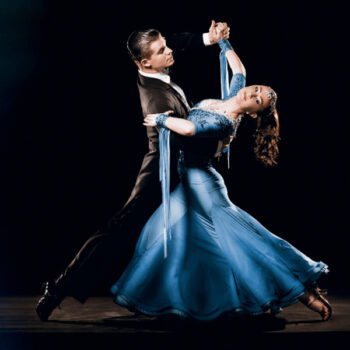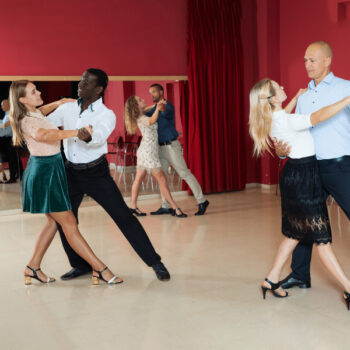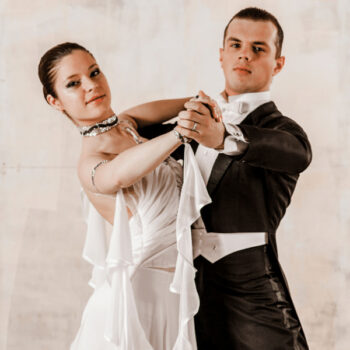The waltz dances are an unusual dancing style that has persisted through the ages. It never fails to enrapture both dancers and spectators with its lovely moves and ethereal rhythms. In this post, we'll go deep into the world of waltz dances, exploring the various styles, their names, characteristics, and typical variants, as well as the intriguing history of this well-liked dance style. We'll also provide a step-by-step breakdown of how to dance the waltz and a history of the dance. Join us as we journey through the grace and beauty of waltz dances.
Types of Waltz Dance Styles
Many different waltz dance styles have developed over time. Each international style has its distinct appeal and qualities that enable dancers to express themselves through various gestures and interpretations. Let's examine a waltz dance styles list:
6 Waltz Dance Styles Names: From Classic to Contemporary
- Viennese Waltz: The Viennese waltz is a well-known dancing style that originated in Vienna, Austria. It is defined by its rapid tempo and continuous spinning. It demands precise footwork and impeccable timing due to its grace and dynamism.
- International Style Waltz: The International style adheres to specific guidelines and rules because it falls within the umbrella of competitive ballroom dancing. It features intricate footwork and intricate choreography, showcasing the dancers' grace, control, and accuracy.
- American Style Waltz: The beautiful and delicate movements of this well-known social dance genre set it apart. The American country western waltz emphasizes long, sweeping strides and lovely spins, creating a dazzling visual spectacle.
- Scandinavian Waltz: The Scandinavian waltz, which can be heard in Nordic nations like Sweden, Norway, and Finland, exhibits a more rooted and natural approach. It frequently includes swinging and twisting motions, reflecting the traditional dance traditions of the area.
- Cajun Waltz: The Cajun waltz combines the grace of the waltz with elements of French traditional dances. It has its origins in the southern United States, specifically Louisiana. It moves quickly, and vibrant music plays in the background.
- Contemporary Waltz: In recent years, dancers and choreographers have embraced the waltz as the basis for creative experimentation and advancement. Pushing the limits of conventional forms, contemporary waltz styles incorporate elements of modern dance, improvisation, and distinctive interpretations.
Hire dance performers | Mixing Cultures & Mixing Dance Styles
Popular Waltz Dance Styles
Some of the many hesitation waltz dance variations have become incredibly popular among dancers and fans. Here are a few notable instances:
Waltz Dances Examples
- With cross steps and effortless glides, the Cross-Step Waltz gives the traditional country dance a modern twist. In social ballroom dance settings, it is often employed and encourages improvisational creativity.
- An amalgam of the tango and the waltz, the tango waltz mixes the beauty and grace of the former with the passion and intensity of the latter. Strong moves and dramatic pauses excitingly mix two contrasting dancing styles.
History of Waltz Dance
The Viennese waltz has roots in Central European folk dance, and its history dates back to the 16th century. These early waltz styles were vivacious and joyous, including circular motions and couples dancing close together.
The waltz didn't begin to be known and accepted widely until the 18th century. In the ballrooms of Vienna, Austria, where it enchanted the aristocratic and social elite, it became a well-liked dance. The waltz underwent a dramatic shift and cemented its position in dance during the 19th century. With fixed dancing routines and guidelines, it became more streamlined and organized.
Waltz Dance Origin
The waltz as we know it today is generally attributed to Austrian composer and performer Johann Strauss. His compositions, including "The Blue Danube," were instrumental in popularizing the waltz in the 19th century. Strauss' melodies and rhythmic arrangements beautifully complimented the waltz's sweeping motions while also lending the dance an enticing quality.
It's important to keep in mind that other cultures and dancing traditions were included in the waltz's development through a collaborative process. The waltz is a combination of Austrian and Bavarian folk dances, as well as court ballroom dance from France, Germany, and Austria. The distinguishing characteristics and attire of the modern waltz were influenced by these sources.
Waltz Dance Meaning and Symbolism
Beyond its technical features, the waltz has profound symbolic meaning. It represents the harmonious interaction between partners and is frequently connected with romance, elegance, and sophistication. The beauty of trust, communication, and shared feelings between dancers is reflected in the dance's beautiful movements and intimate connection.
Symbolic Significance of Waltz Dance
The symbolic meaning of the waltz goes beyond the dance floor. With its rhythmic rise and fall, spins and twists echoing the ups and downs we experience, it acts as a metaphor for life itself. The waltz imparts lessons about perseverance, flexibility, and the significance of striking a balance along our journey.
How to Dance Waltz Style?
Here is a step-by-step instruction manual to get you started if you're fascinated by the waltz and anxious to master its elegant movements:
Instructions for Waltz Dance Steps:
- Start with the basic steps, which comprise a slow rotation, side steps with the left foot, and alternating forward and backward movements with the right foot. The waltz's rhythm must be started and maintained with the left foot.
- Keep your shoulders down and back, and lean a little forward while maintaining a strong, relaxed frame. Better balance and communication with your partner are made possible by this position. Keep in mind to equally distribute your weight between both feet, with your left foot leading the way.
- Three beats are used in each measure of the waltz's 3/4 time signature to create timing and rhythm. Allow the lyrical flow of the song to direct your movements. Start with your left foot on the first beat, then your right foot on the second, and finally your left foot doing a side step on the third beat. Maintain the beat and time your steps to the music by repeating this pattern throughout the dance.
The Original Version of Waltz
From the waltz's original form to the one we know today, it has undergone significant alteration. Initially, the dance's close partner grip and circular movements sparked criticism and debate. But through time, it gained popularity and acceptance, making way for the magnificent variations we have today.
In conclusion, waltz ballroom dances continue to captivate viewers due to their grace, elegance, and long history. Whether you're an experienced dancer looking to try new styles or a beginner eager to learn, the waltz provides a world of beauty and expression. As you embrace the music, the steps, and the meaning of waltz dances, allow yourself to get fascinated by its magical universe.




